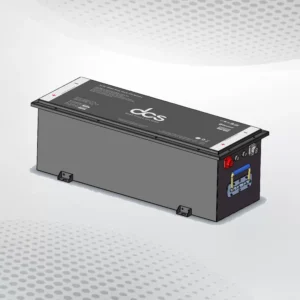Imagine stepping onto a warm floor on a chilly morning, the gentle heat from below wrapping around you like a cozy blanket. This isn’t just wishful thinking; it’s the reality of radiant-heating. More than just an alternative to traditional heating methods, radiant-heat systems transform how we experience comfort in our homes and offices. As energy costs rise and environmental concerns grow, many reevaluate their heating options—and for good reason. Radiant heat promises unparalleled warmth and offers impressive efficiency and health benefits.
How Radiant-heat Works?
Radiant-heat operates on a simple yet effective principle: warmth radiates from a surface. This system can be installed beneath floors, within walls, or in ceilings, providing consistent heating throughout the space. Warm water flows through pipes or electric cables embedded in these surfaces. As the surfaces warm up, they release heat into the surrounding air and objects.
Unlike traditional heating methods that rely on blowing hot air, radiant-heating heats people and items directly. This results in an even distribution of warmth without cold spots. The process is silent and unobtrusive. With no ducts to carry heated air, there’s less chance for dust accumulation or allergens to circulate through your environment. This creates a comfortable atmosphere and promotes overall healthier indoor air quality.
Benefits of Radiant-heat
Radiant-heat offers a cozy warmth that traditional systems struggle to match. It heats objects and surfaces directly, creating a comfortable environment throughout the room.
– Energy Efficiency
Radiant-heat systems stand out for their impressive energy efficiency. Unlike traditional heating methods that force warm air through ducts, radiant-heat directly warms surfaces and objects in the room. This method minimizes heat loss since there are no drafts or temperature fluctuations. As a result, you enjoy consistent warmth while using less energy.
Many radiant systems operate at lower temperatures than conventional heaters. This allows your boiler or heating unit to work more efficiently, translating into lower utility bills over time. Additionally, modern technology has led to further thermostat advancements that optimize these systems. Intelligent controls can adjust temperatures based on occupancy and preferences, enhancing savings even more.
– Comfort and Health Benefits
Radiant-heat systems provide unparalleled comfort in your living or working space. Unlike traditional heating methods that create hot and cold spots, radiant-heat distributes warmth evenly across the floor. This gentle, consistent heating makes walking barefoot a pleasure during colder months.
Moreover, these systems contribute positively to indoor air quality. Since they don’t rely on forced air circulation like conventional heaters, dust and allergens are less disturbed. This can be especially beneficial for individuals with allergies or respiratory issues.
Warm surfaces also encourage better skin hydration and help minimize dampness in your home or office environment. The cozy feel of radiant-heat creates a welcoming atmosphere that promotes relaxation and well-being throughout any space. It’s not just about staying warm; it’s also about creating a healthier living experience.
– Space Saving Design
Radiant-heat systems are a game changer when it comes to maximizing space in your home or office. Unlike traditional heating methods that rely on bulky radiators or vents, radiant-heat operates discreetly beneath the floor or within walls. This sleek design frees up valuable real estate. You can arrange furniture without worrying about blocking airflow from heaters. The absence of visible units means more flexibility in decorating and utilizing every corner of your room.
Additionally, radiant-heating eliminates the need for unsightly ductwork, making it an ideal choice for smaller spaces where aesthetics matter. With everything hidden away, you gain a clean and uncluttered look while enjoying efficient warmth throughout the area. Whether renovating or building anew, embracing this innovative approach allows you to enjoy comfort and style without sacrificing precious square footage.
Types of Radiant-heat Systems
Radiant-heat systems come in several varieties, each catering to different needs and preferences.
Hydronic systems are famous for their efficiency. They circulate warm water through pipes installed beneath floors or within walls, providing a consistent heat source.
Electric radiant-heating is another option. This system uses electric wires or mats placed under flooring materials to generate warmth directly. It’s particularly effective in smaller spaces or as supplemental heating.
Infrared radiant-heaters work by warming objects and people rather than the air itself. These units can be portable, making them versatile for home use or outdoor settings.
There’s a combination approach where hydronic and electric methods coexist to maximize comfort across various zones in your space. Each type has unique advantages, allowing you to choose what works best for your environment and lifestyle.
Installation Process and Cost
The installation process for radiant-heat systems can vary depending on the type chosen. It generally involves several vital steps that require careful planning and execution.
- First, a professional assessment of your space is essential. This helps determine the best layout and system for optimal performance.
- Next comes the installation of either electric or hydronic heating elements. For electric systems, cables are laid beneath floors, while hydronic systems require piping to circulate heated water.
- Labour costs play a significant role in the overall expense. Depending on your location and the complexity of the setup, fees can range from moderate to high.
It’s also important to consider any additional modifications needed for existing structures—like insulation upgrades or flooring adjustments—that could significantly impact total costs.
Maintenance and Long-Term Savings
Regular maintenance of your radiant-heat system ensures it operates efficiently for years. A well-maintained system reduces the risk of costly repairs down the line. Simple tasks like checking valves and inspecting thermostats can make a big difference.
Long-term savings come from energy efficiency. Radiant-heating uses less energy compared to traditional systems, leading to lower utility bills month after month. Its comfort also means you’re less likely to crank up the thermostat during chilly days.
Consider that many radiant-heat systems boast longevity, often outlasting standard heaters. This durability translates into fewer replacements over time, which is another way to save money in the long run.
Investing a little effort in upkeep pays off substantially with financial and comfort benefits. Enjoying consistent warmth without breaking the bank is an enticing prospect for any homeowner or business owner looking to enhance their space.
Radiant-heat vs. Traditional Heating: Which Is Right for You?
Consider your specific needs when deciding between radiant-heat and traditional heating methods. Radiant-heat warms surfaces directly, creating a cozy atmosphere without the drafts often associated with forced air systems.
- Traditional heating relies on ducts to distribute warm air, which can lead to uneven temperatures throughout the space. With radiant systems, warmth radiates from floors or walls, ensuring consistent comfort in every corner.
- Another factor is energy efficiency. Radiant-heat typically consumes less energy than conventional systems, potentially reducing your utility bills over time.
- However, installation costs can vary significantly between the two options. Assessing long-term savings versus upfront expenses is crucial for making an informed decision about what’s best for you.
It boils down to personal preference and how each system aligns with your lifestyle and budget considerations.
Maintain Your Radiant-heat System for Optimal Performance
Regular maintenance is key to ensuring your radiant-heat system runs efficiently. Start by checking the thermostat settings and ensuring they are accurate. A well-calibrated thermostat can make a noticeable difference in performance.
- Inspect the heating elements for signs of wear or damage. Whether it’s electric mats or hydronic tubes, addressing issues early prevents larger problems later.
- Flushing your hydronic system periodically helps remove sediment buildup that can inhibit efficiency. This simple task promotes better heat transfer throughout your space.
- Remember to check the insulation around pipes and floors as well. Proper insulation minimizes energy loss and keeps your home cozy during colder months.
Consult with a professional annually for a thorough inspection. They will identify potential issues you may overlook and help maintain optimal performance year-round.
Choosing the Right Radiant-heating System for Your Space
Choosing the right radiant-heating system for your space involves considering several factors. First, evaluate the size and layout of your area. Larger rooms might benefit from a more extensive network of tubing or electric mats.
Next, consider your flooring type. Different systems work better with specific materials, such as hardwood, tile, or carpet, which can influence efficiency and comfort levels.
Consider installation options as well. Some systems are more accessible to retrofit into existing homes than others. Make sure to align your choice with any renovation plans you may have.
Assess your budget not just for initial costs but also for long-term savings on energy bills. Research various brands to find one that balances performance with reliability and is in line with ongoing maintenance needs.
Experience the Comfort and Benefits of Radiant-heat
Radiant-heat offers an unparalleled comfort that traditional heating methods often struggle to match. Imagine stepping onto a warm floor on a chilly morning or feeling evenly distributed warmth throughout your living space. This system eliminates cold spots and drafts, creating a cozy environment that wraps around you like a gentle hug. No more waking up to icy floors or battling uneven temperatures from room to room.
Additionally, radiant-heat works silently in the background, providing warmth without the noise of fans or blowers. This quiet operation enhances relaxation and peace within your home or office. Radiant systems also have health benefits. They reduce air movement, which helps minimize dust circulation. This leads to improved indoor air quality, making breathing more accessible for those with allergies or respiratory conditions.
Conclusion
Radiant heat systems offer a transformative approach to home and office heating. Their ability to provide consistent warmth while maximizing energy efficiency can significantly enhance any space. When considering options, it’s essential to weigh personal preferences against practical needs. Each type of radiant system has unique advantages that suit different environments. Investing in radiant-heat is not just about immediate warmth but long-term savings and sustainable living.
FAQS
Several questions often arise when considering radiant heat for your living or working space. Addressing these FAQs can help clarify any uncertainties you may have.
What is the best type of radiant-heating system?
The ideal type depends on your specific needs and preferences. Hydronic systems are great for larger areas, while electric systems work well in smaller spaces or as supplemental heat sources. Assess your square footage and budget to make the right choice.
How does radiant heat compare in cost with traditional heating methods?
While the upfront installation costs may be higher than traditional systems, radiant heat typically results in lower energy bills over time due to its efficiency. This makes it a worthwhile investment that pays off through savings.
Is maintenance required for radiant-heating systems?
Yes, regular maintenance ensures optimal performance and longevity of your system. Checking for leaks in hydronic setups or ensuring electrical components function properly helps prevent issues.
These insights should clarify your exploration of whether radiant-heat is appropriate for your home or office heating needs. Embracing this innovative approach can enhance comfort and efficiency all year round.




